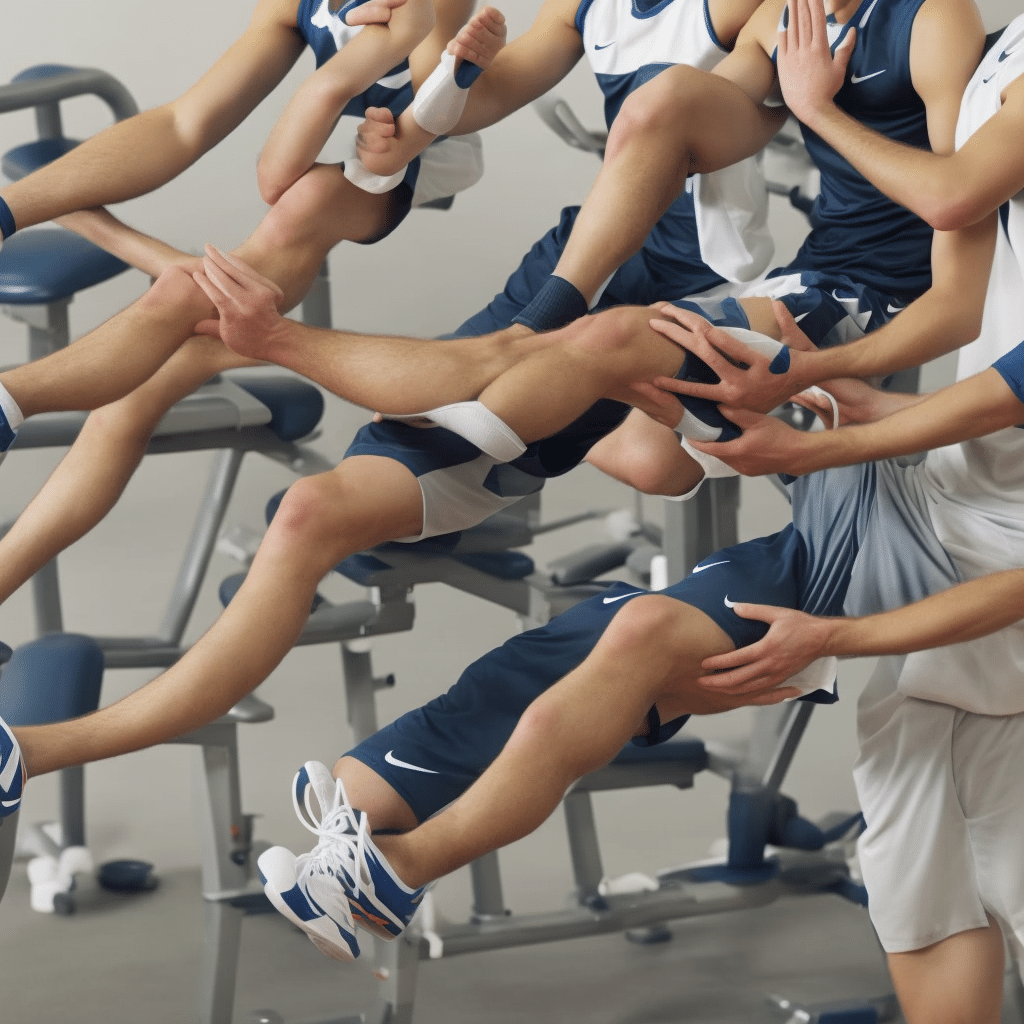How Can Neuromuscular Training Prevent Ankle Sprains in Basketball Players?

The frequency of ankle sprains among basketball players is alarmingly high, threatening both the short-term and long-term career prospects of these athletes. The high-intensity nature of the sport, combined with the increased strain on the ankles due to jumping and abrupt directional changes, place these athletes at a higher risk of sustaining this type of injury. However, recent studies have shown that neuromuscular training serves as a powerful tool in reducing the occurrence of ankle sprains.
In this article, we delve into the details of how neuromuscular training can help prevent ankle sprains in basketball players. We’ll be exploring the underlying principles of this approach, the specifics of neuromuscular training for ankle stability, how to implement it into a training regimen, and the current research findings in this area.
Lire également : What Nutritional Interventions Can Optimize Recovery During Multi-Stage Cycling Races?
Understanding Neuromuscular Training
Neuromuscular training involves exercises designed to improve communication between your brain and muscles. This type of training focuses on improving muscle reaction time, coordination, power, and proprioception – the sense of self-movement and body position.
Neuromuscular training is often overlooked in favour of more traditional strength and endurance exercises. However, the significance of this training in injury prevention, especially in sports requiring high-intensity, complex movements like basketball, cannot be understated. By improving the body’s ability to respond quickly and correctly to various physical demands, neuromuscular training can significantly decrease the risk of injury.
Lire également : How to Apply Differential Learning in Skill Development for Team Sports?
Neuromuscular Training for Ankle Stability
Enhancing the stability of the ankle joint is one of the primary objectives of neuromuscular training. This is achieved by incorporating a series of exercises focused on strengthening the muscles around the ankle, improving balance, and enhancing proprioception.
Exercises such as heel walks, toe walks, ankle circles, and balance board exercises are typically included in the neuromuscular training regimen for ankle stability. These exercises help in strengthening the muscles, ligaments, and tendons around the ankle, thereby improving its stability and resistance to stress. By doing so, these exercises reduce the risk of ankle sprains by increasing the structural integrity and resilience of the ankle joint.
Incorporating Neuromuscular Training into Your Regimen
Incorporating neuromuscular training into a regular training regimen is not particularly complex. It involves a structured approach that includes specific exercises designed to improve ankle stability.
Starting with simple exercises like heel and toe walks, athletes can gradually progress to more advanced movements like balance board exercises. While beginning, these exercises should be performed under the supervision of a trained professional to ensure proper form and technique. They should be performed consistently, at least three times a week, for optimal results.
Further, the intensity of the exercises should be increased gradually to challenge the muscles and improve their strength and endurance. This progressive approach to neuromuscular training helps in fostering better communication between the brain and muscles, which is vital in preventing ankle sprains.
Research Findings on Neuromuscular Training and Ankle Sprains
The effectiveness of neuromuscular training in preventing ankle sprains is well-documented in research. Numerous studies have shown a significant reduction in the occurrence of ankle sprains among athletes who follow a neuromuscular training regimen.
A meta-analysis published in the British Journal of Sports Medicine found that neuromuscular training reduces the risk of ankle sprains in athletes by nearly 50%. Another study published in the Journal of Athletic Training found that basketball players who underwent neuromuscular training had a 38% lower risk of ankle sprains compared to those who didn’t.
These research findings underscore the value of incorporating neuromuscular training into the regular training regimen of basketball players. By doing so, players can significantly reduce their risk of ankle sprains, enhancing their performance and longevity in the sport.
In conclusion, neuromuscular training offers a promising approach to preventing ankle sprains in basketball players. By incorporating specific exercises designed to improve ankle stability and improve the communication between the brain and muscles, athletes can significantly reduce their risk of this common, yet potentially career-threatening injury. It’s time that neuromuscular training is given the attention it deserves in the training regimen of basketball players.
The Role of Professional Guidance in Neuromuscular Training
Professional guidance in neuromuscular training is key to ensuring that athletes are performing exercises correctly and safely. This is particularly important when it comes to preventing ankle sprains. A trained professional can not only provide guidance on how to perform specific exercises but also adjust the training program to suit the individual needs of the athlete.
When incorporating neuromuscular training into a regular regimen, trainers should initially focus on simple movements to build a solid foundation, gradually progressing towards more complex exercises. For instance, exercises such as heel walks and toe walks should be introduced first, followed by more challenging ones like balance board exercises. It is crucial to ensure proper form and technique during these exercises, as incorrect execution could potentially lead to injury rather than preventing it.
Additionally, a trained professional can help monitor the progress of the athlete and make necessary adjustments to the training program. For example, the intensity of the exercises can be increased over time to continually challenge the muscles and improve their strength, coordination, and reaction time.
Moreover, professionals can also provide vital insights into the recovery and rehabilitation process in case of an injury. This includes advice on rest, nutrition, and recovery exercises, all of which play a significant role in ensuring a speedy and complete recovery.
Conclusion: Neuromuscular Training – A Game-changer for Basketball Players
In summation, neuromuscular training presents an effective strategy for preventing ankle sprains amongst basketball players. By focusing on enhancing muscle reaction time, coordination, power, and proprioception, this approach significantly reduces the risk of ankle injuries.
Research findings consistently validate the efficacy of neuromuscular training in reducing ankle sprains. Incorporation of specific exercises designed to enhance ankle stability, under the guidance of a trained professional, can lead to major improvements in an athlete’s performance and career longevity.
It’s high time that the sporting community, especially those involved in high-intensity sports like basketball, recognize the potential of neuromuscular training. Embracing this approach not only aids in injury prevention but also contributes to overall performance enhancement. By doing so, we can ensure a safer, more encouraging sporting environment for our athletes, bolstering their confidence and paving the way for stellar achievements.
As we move forward, it is essential that more research is conducted to further refine neuromuscular training strategies and tailor them to individual requirements. This will help maximize the potential of this approach, making it a crucial part of athletic training regimens. In the end, the goal is to ensure that athletes can enjoy their sport without the constant threat of debilitating injuries like ankle sprains.
